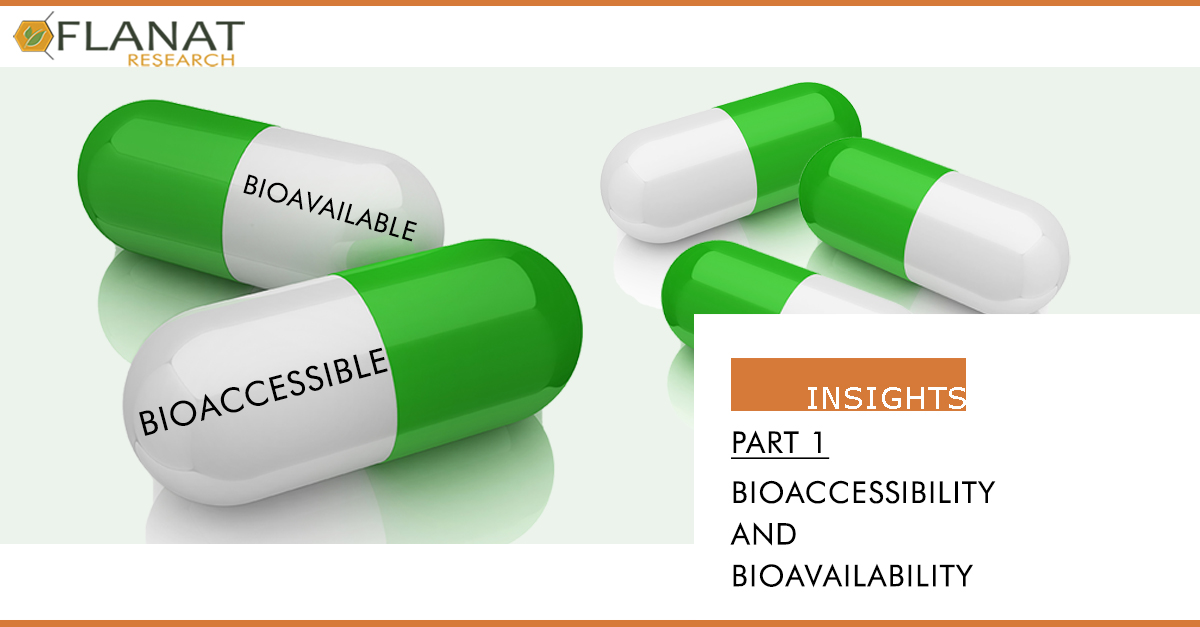The action associated with the intake of phytochemicals is linked to their bioavailability: the ability to be absorbed at an enteric level to reach the bloodstream and therefore reach the target of interest.
Plant secondary metabolites, or phytochemicals, are a large group of structurally and chemically different molecules known not to be essential for humans, but it is otherwise known that their intake has beneficial effects on the human organism, promoting the prevention of various pathologies.
Most of these compounds consumed daily through the diet do not reach the tissue concentrations necessary to exert the expected beneficial effects due to their low bioavailability. A prerequisite for the absorption of a compound at the intestinal level, and therefore for its bioavailability, is in fact its bioaccessibility: the fraction of the compound that is available for absorption after being released from the food matrix and having solubilized in the gastrointestinal fluids. (Alminger 2014)
Bioaccessibility is then a factor limiting the absorption, and consequently the bioavailability, of molecules and depends both on the characteristics of the food matrix and on the physiological conditions of the digestive process.
A 2020 study compared the bioaccessibility index of polyphenols present in different types of fruits and in the extracts obtained from them, observing that the food matrix plays a key role in the release of the molecules. In fact, the polyphenols present in the extracts are released more easily, while the fruit polyphenols have greater bonds with the matrix which prevent them from passing into solution. Important differences have been noted between the different types of fruit as the different bonds that can be established between the molecule and the matrix influence its release. (Tarko 2020)
The release of the molecules can be influenced by the food matrix and also by the type of process to which it is subjected. Some phytochemicals are in fact more susceptible to oxidation and degradation following matrix breakdown. In some other compounds, however, the destruction of the matrix is responsible for their release since they are normally enclosed in cellular compartments that prevent this. During the crushing of the garlic bulb, for example, alliinase is released, the enzyme that allows the production of those sulfur compounds responsible for the beneficial effects.
The chemical characteristics of the molecules are also a factor influencing bioaccessibility and carotenoids are another group of molecules whose release from the food matrix is difficult and depends on interactions with proteins; these bonds can be degraded with high temperatures (for example with cooking). Carotenoids, as lipophilic compounds, are absorbed following emulsification and incorporation into micelles, so it is possible to establish a competition between carotenoids and other lipophilic nutrients. (Alminger 2014)
The chemical characteristics of the molecules are also a factor that influences bioaccessibility; carotenoids, for example, are another group of molecules whose release from the food matrix is difficult and depends on interactions with proteins; these bonds can degrade at high temperatures (for example during cooking). Carotenoids, as lipophilic compounds, are absorbed after emulsification and incorporation into micelles, therefore competition may arise between carotenoids and other lipophilic nutrients. (Alminger 2014)
Other lipophilic compounds, such as quercetin and rutin, show low bioaccessibility due to their poor solubility. Resveratrol is also a non-water-soluble compound, however its solubility in ethanol suggests increased absorption and plasma concentration in the presence of a lipophilic food matrix. Despite this, its bioaccessibility remains limited: a study shows that it would be necessary to consume approximately 3500 L of red wine, 2600 kg of grapes, up to 35000 kg of peanuts or 2500 kg of apples per day to reach the correct daily doses. Furthermore, the different chemical characteristics of polyphenols also influence their stability to factors such as temperature, pH and enzymes.
Another fundamental element in the absorption of phytocomplexes is the digestive process and all the factors related to it. Anthocyanins, for example, are degraded before they even reach the intestine (their specific site of absorption). (Ozkan 2020) In-depth knowledge of the human digestive process and therefore of all the factors that intervene during the intake of a phytocomplex, allows us to evaluate the appropriate solutions to overcome all the critical points that limit its bioaccessibility.
In this way it is possible to formulate foods or supplements capable of releasing molecules that can be absorbed by the body in the necessary doses and manifest the desired beneficial effects. In fact, everything that is taken orally undergoes the digestion process before being absorbed systemically. The process of digestion of food is complex and involves two sub-processes that occur simultaneously: a mechanical process that starts from the mouth and continues up to the stomach in which the food is destroyed into smaller pieces, and an enzymatic process that also begins in the mouth and continues to the intestine where the macromolecules are broken into smaller molecules in order to be absorbed into the bloodstream. (Lucas-Gonzales 2018)
We can state that the bioaccessibility of a compound is the amount that is released from its matrix in the gastrointestinal tract, making it available to enter the bloodstream. Evaluating the bioaccessibility of compounds is therefore the primary objective in the development of a functional food or a nutraceutical formulation.
In Part 2 we will review how bioaccessibility is evaluated.

